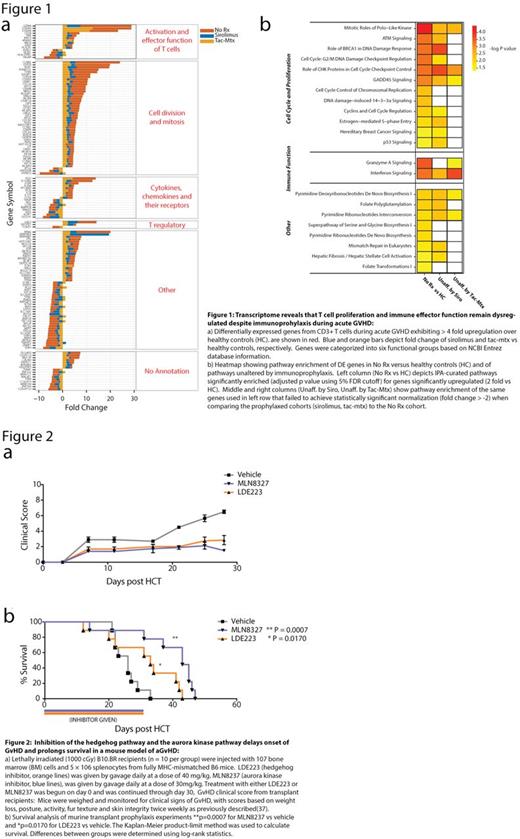Abstract
Graft versus host disease (GvHD) is the most common complication of hematopoietic stem cell transplant (HCT). However, our understanding of the molecular pathways that cause this disease remains incomplete, leading to inadequate targeted strategies for prevention and treatment. To address this, we determined the gene expression profile of non-human primate (NHP) T cells during active and partially controlled acute GvHD (aGvHD), in order to accomplish two goals: 1) uncover important genetic drivers of aGvHD and 2) identify novel, targetable pathways for optimal aGvHD prevention.
Utilizing microarray technology, we measured the gene expression profiles of flow cytometrically purified CD3+ T cells from NHP recipients of MHC partially-matched HCT in three treatment cohorts resulting in increasing degrees of survival: 1) no immunoprophylaxis (No Rx, MST = 7.5); 2) sirolimus monotherapy (MST = 17) tacrolimus-methotrexate (Tac-Mtx) dual prophylaxis (MST = 49). Arrays were performed on T cells purified on Day +14 post-transplant (unless terminal analysis occurred earlier due to severe disease). This comparison allowed us to determine the impact of both mTOR and calcineurin inhibition on the molecular pathways dysregulated during GvHD, and to determine which genes and pathways remained dysregulated despite prophylaxis.
Pathways identified by this strategy may contain new therapeutic targets unaffected by current immunoprophylactic approaches. We found that the transcriptional profile of donor T cells from HCT recipients with unprophylaxed GvHD was characterized by significant perturbation of pathways regulating T cell proliferation, effector function and cytokine synthesis (Figure 1a). By identifying pathways unaffected by sirolimus or tac-mtx therapy (Figure 1b), we discovered multiple potentially druggable targets not previously implicated in the pathophysiology of aGvHD. These targets prominently included the hedgehog and the aurora kinase A pathways. Utilizing a murine aGvHD model, we demonstrated that pharmacologic inhibition of these pathways could mitigate disease and improve survival (Figure 2a,b).
These data provide the first identification of the T cell transcriptome of primate acute GvHD and the hedgehog and aurora kinase A pathways as novel potential targets for prevention of this disease.
No relevant conflicts of interest to declare.
Author notes
Asterisk with author names denotes non-ASH members.


